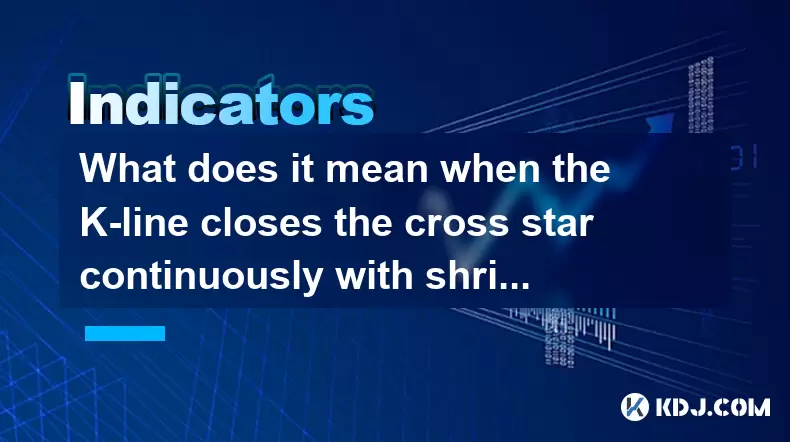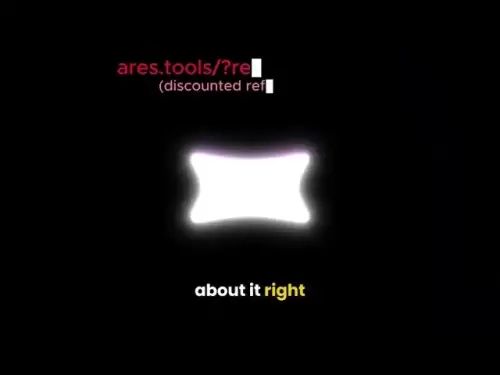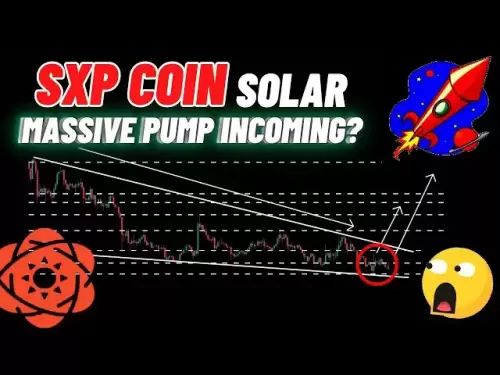-
 Bitcoin
Bitcoin $117500
2.04% -
 Ethereum
Ethereum $3759
3.02% -
 XRP
XRP $3.171
3.30% -
 Tether USDt
Tether USDt $1.000
0.03% -
 BNB
BNB $782.4
2.52% -
 Solana
Solana $187.2
5.62% -
 USDC
USDC $0.0000
0.02% -
 Dogecoin
Dogecoin $0.2380
5.26% -
 TRON
TRON $0.3175
1.07% -
 Cardano
Cardano $0.8227
4.03% -
 Hyperliquid
Hyperliquid $44.50
5.44% -
 Sui
Sui $4.020
10.07% -
 Stellar
Stellar $0.4396
6.28% -
 Chainlink
Chainlink $18.32
4.55% -
 Hedera
Hedera $0.2628
10.71% -
 Bitcoin Cash
Bitcoin Cash $554.8
4.90% -
 Avalanche
Avalanche $24.20
4.60% -
 Litecoin
Litecoin $113.7
2.31% -
 Shiba Inu
Shiba Inu $0.00001413
5.99% -
 UNUS SED LEO
UNUS SED LEO $8.984
0.11% -
 Toncoin
Toncoin $3.326
7.22% -
 Ethena USDe
Ethena USDe $1.001
0.00% -
 Uniswap
Uniswap $10.49
4.56% -
 Polkadot
Polkadot $4.092
4.02% -
 Monero
Monero $326.6
1.30% -
 Dai
Dai $1.000
-0.01% -
 Bitget Token
Bitget Token $4.570
2.49% -
 Pepe
Pepe $0.00001267
5.10% -
 Aave
Aave $297.3
3.10% -
 Cronos
Cronos $0.1344
4.10%
What does it mean when the K-line closes the cross star continuously with shrinking volume?
Consecutive cross stars with shrinking volume signal market indecision and potential consolidation, often preceding a breakout in crypto trading.
Jul 26, 2025 at 06:29 am

Understanding the Cross Star K-Line Pattern
The cross star is a significant candlestick pattern in technical analysis within the cryptocurrency trading domain. It occurs when the opening and closing prices are nearly identical, forming a small body with upper and lower shadows. This indicates market indecision, where neither buyers nor sellers could gain control during the trading period. When this pattern appears consecutively, it suggests a prolonged state of equilibrium between supply and demand. Traders interpret this as a potential pause in the current trend, often preceding a breakout or reversal. The appearance of multiple cross stars implies that the market is consolidating, and participants are waiting for new information or momentum to emerge.
The Role of Shrinking Volume in Confirmation
Volume plays a crucial role in validating candlestick patterns. When the cross star appears with shrinking volume, it reinforces the idea of decreasing market participation. Declining volume during these formations indicates that fewer traders are actively buying or selling, which often happens when the market lacks a clear direction. In the context of cryptocurrency markets, which are highly sensitive to news and sentiment, low volume during cross star formations may suggest that major players are holding positions and not placing large orders. This creates a coiling effect, where volatility is compressed and a sharp move could follow once volume returns.
Interpreting Consecutive Cross Stars in Different Market Contexts
The meaning of consecutive cross stars with shrinking volume varies depending on the broader price context:
- If they appear after a strong uptrend, they may signal exhaustion among buyers. The lack of new buying pressure combined with indecisive price action could indicate that the rally is losing steam.
- When found after a downtrend, these patterns might reflect weakening selling momentum. Sellers are no longer pushing prices lower aggressively, and buyers may be starting to step in cautiously.
- During a sideways or range-bound market, consecutive cross stars confirm ongoing consolidation. The shrinking volume emphasizes that the market is in a low-volatility phase, possibly building energy for a breakout.
In each scenario, the combination of cross star formations and declining volume acts as a warning sign that the current trend may be stalling.
How to Monitor and Confirm the Signal
To effectively use this pattern, traders must follow a structured observation process: - Identify at least two or more cross stars in succession on the chosen time frame (e.g., 4-hour, daily).
- Ensure that the volume bars beneath the candles are visibly decreasing with each cross star. Use a volume indicator on your charting platform to verify this trend.
- Check the length of the wicks. Longer upper and lower shadows suggest stronger rejection at both price extremes, reinforcing the indecision.
- Apply a moving average (such as 20-period or 50-period) to assess whether the price is near a key support or resistance level, which can add significance to the pattern.
- Wait for a breakout candle with increased volume to confirm the next directional move. A strong bullish candle following the pattern suggests upward momentum, while a bearish candle indicates potential downside.
Platforms like TradingView or Binance’s built-in chart tools allow you to overlay volume and candlestick patterns easily. Enable the volume histogram and adjust the time frame to spot these signals accurately.
Practical Example Using a Cryptocurrency Chart
Consider Bitcoin (BTC/USDT) on a 4-hour chart: - After a 15% rise over three days, the price enters a narrow range.
- Three consecutive candles form cross stars, each with minimal body and visible wicks.
- The volume bars under these candles show a steady decline—the third candle has the lowest volume in the past week.
- The price remains within a $200 range during this period, indicating consolidation.
- On the fourth candle, a long green candle with volume spiking 50% above average breaks above the range, signaling a potential continuation of the uptrend.
This example illustrates how consecutive cross stars with shrinking volume serve as a consolidation signal before a new impulse move. Traders who recognized the pattern could have placed a buy stop order slightly above the consolidation zone to capture the breakout.
Risks and Limitations of the Pattern
Despite its usefulness, the cross star pattern with shrinking volume is not foolproof: - False breakouts are common in crypto markets due to their high volatility. A breakout candle may reverse quickly, leading to losses.
- Low volume can persist for extended periods, resulting in prolonged sideways movement without a clear direction.
- In highly leveraged markets, whale manipulation can create artificial patterns. Large players may trigger stop-loss orders by pushing price temporarily beyond consolidation zones.
- The pattern carries different weight on various time frames. A daily chart cross star sequence is more significant than one on a 5-minute chart.
Therefore, it is essential to combine this signal with support/resistance levels, trendlines, or momentum indicators like RSI or MACD to improve accuracy.
Frequently Asked Questions
What time frames are best for observing consecutive cross stars with shrinking volume?
The daily and 4-hour charts are most reliable for this pattern. These time frames filter out market noise common in lower intervals like 5-minute or 15-minute charts. On higher time frames, the signals reflect stronger institutional participation and are less prone to manipulation.Can the cross star pattern occur at the bottom of a downtrend as a reversal signal?
Yes. When consecutive cross stars appear after a sharp decline and volume continues to shrink, it suggests sellers are exhausted. If followed by a bullish engulfing candle or a strong up-move with rising volume, it may confirm a bottom and potential reversal.How do I differentiate a true cross star from a doji with a small body?
A true cross star has an extremely small or nonexistent body, where open and close prices are nearly equal. The upper and lower wicks should be clearly visible and relatively long. Some charting platforms label dojis automatically—look for “neutral” or “indecision” labels. Manual verification by checking price data ensures accuracy.Should I trade based solely on this pattern?
No. While the pattern provides insight into market indecision, it should not be used in isolation. Always incorporate volume analysis, key price levels, and additional indicators to confirm the context. Entering trades without confirmation increases the risk of false signals, especially in volatile crypto markets.
Disclaimer:info@kdj.com
The information provided is not trading advice. kdj.com does not assume any responsibility for any investments made based on the information provided in this article. Cryptocurrencies are highly volatile and it is highly recommended that you invest with caution after thorough research!
If you believe that the content used on this website infringes your copyright, please contact us immediately (info@kdj.com) and we will delete it promptly.
- Vaultz Capital's Bitcoin Bet: A Strategic Shift on the Aquis Exchange
- 2025-07-26 20:30:12
- Pi Coin, Wallet Features, and Coinbase: What's the Buzz?
- 2025-07-26 18:30:12
- Worldcoin, Punisher Coin, and the Meme Coin Mania: What's the Haps?
- 2025-07-26 18:30:12
- Conviction, Justice System, and Murders: A Look at Recent Cases and Shifting Perspectives
- 2025-07-26 18:50:11
- Shiba Inu, Remittix, and the Market Surge: What's the Hype?
- 2025-07-26 19:10:12
- Cardano Price, ADA Holders, and Leadership Criticism: What's the Real Deal?
- 2025-07-26 19:30:12
Related knowledge

What does it mean that the rebound is blocked after the moving average is arranged in a short position for the first time?
Jul 26,2025 at 10:51am
Understanding the Short-Term Moving Average ConfigurationWhen traders refer to a 'short position arrangement' in moving averages, they are describing ...

What does it mean that the parabolic indicator and the price break through the previous high at the same time?
Jul 26,2025 at 07:22pm
Understanding the Parabolic Indicator (SAR)The Parabolic SAR (Stop and Reverse) is a technical analysis tool developed by J. Welles Wilder to identify...

What does it mean when the price rises along the 5-day moving average for five consecutive days?
Jul 26,2025 at 08:07am
Understanding the 5-Day Moving Average in Cryptocurrency TradingThe 5-day moving average (5DMA) is a widely used technical indicator in cryptocurrency...

What does it mean when ADX breaks through 25 and +DI continues to rise?
Jul 26,2025 at 07:00pm
Understanding the ADX Indicator and Its ThresholdsThe Average Directional Index (ADX) is a technical analysis tool used to measure the strength of a t...

What does it mean when the price breaks through the 60-day moving average with a large volume but shrinks the next day?
Jul 26,2025 at 06:01am
Understanding the 60-Day Moving Average in Cryptocurrency TradingThe 60-day moving average (60DMA) is a widely used technical indicator in the cryptoc...

What does the sudden rise of ADX in DMI accompanied by +DI crossing -DI indicate?
Jul 26,2025 at 01:21pm
Understanding the DMI and Its Core ComponentsThe Directional Movement Index (DMI) is a technical analysis tool used to determine the presence and stre...

What does it mean that the rebound is blocked after the moving average is arranged in a short position for the first time?
Jul 26,2025 at 10:51am
Understanding the Short-Term Moving Average ConfigurationWhen traders refer to a 'short position arrangement' in moving averages, they are describing ...

What does it mean that the parabolic indicator and the price break through the previous high at the same time?
Jul 26,2025 at 07:22pm
Understanding the Parabolic Indicator (SAR)The Parabolic SAR (Stop and Reverse) is a technical analysis tool developed by J. Welles Wilder to identify...

What does it mean when the price rises along the 5-day moving average for five consecutive days?
Jul 26,2025 at 08:07am
Understanding the 5-Day Moving Average in Cryptocurrency TradingThe 5-day moving average (5DMA) is a widely used technical indicator in cryptocurrency...

What does it mean when ADX breaks through 25 and +DI continues to rise?
Jul 26,2025 at 07:00pm
Understanding the ADX Indicator and Its ThresholdsThe Average Directional Index (ADX) is a technical analysis tool used to measure the strength of a t...

What does it mean when the price breaks through the 60-day moving average with a large volume but shrinks the next day?
Jul 26,2025 at 06:01am
Understanding the 60-Day Moving Average in Cryptocurrency TradingThe 60-day moving average (60DMA) is a widely used technical indicator in the cryptoc...

What does the sudden rise of ADX in DMI accompanied by +DI crossing -DI indicate?
Jul 26,2025 at 01:21pm
Understanding the DMI and Its Core ComponentsThe Directional Movement Index (DMI) is a technical analysis tool used to determine the presence and stre...
See all articles

























































































